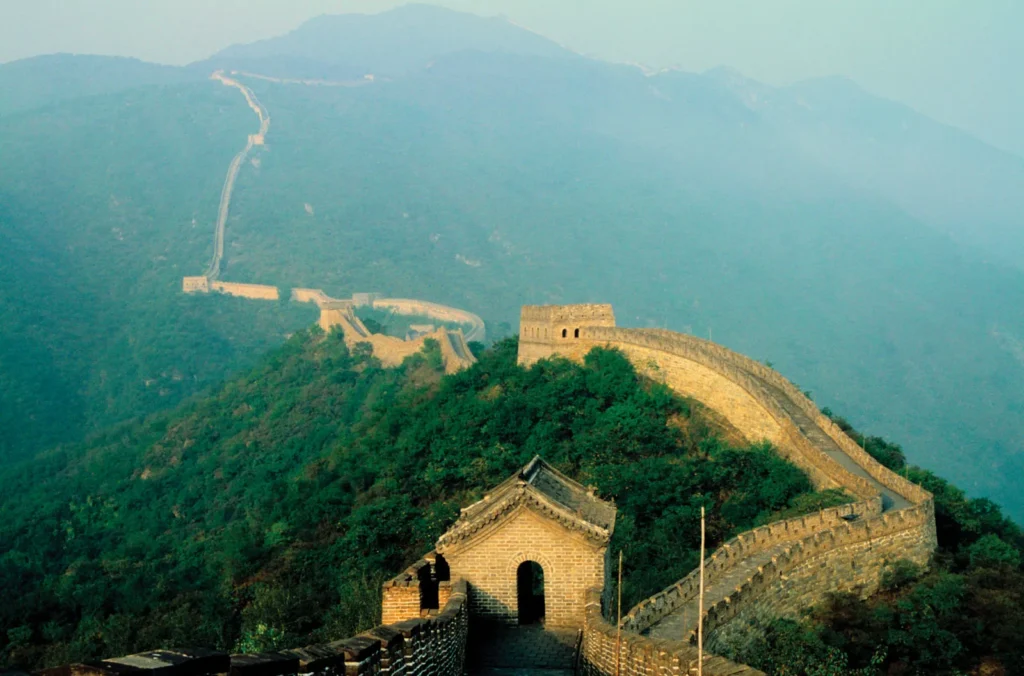The Great Wall of China is one of the most iconic landmarks in the world and a must-visit destination for travelers. Stretching across the northern part of China, this ancient structure holds immense historical and cultural significance. If you’re planning a trip to the GreatWall, this travel guide will provide you with all the essential information you need to make the most of your visit.
1. Introduction
The Great Wall of China is an architectural marvel that has stood the test of time. Built over several centuries, it is a testament to the ingenuity and craftsmanship of the ancient Chinese civilization. Today, it attracts millions of visitors from around the world who come to marvel at its grandeur and learn about its rich history.
2. History of the Great Wall
The construction of the GreatWall began over 2,000 years ago during the Qin Dynasty and continued throughout various dynasties. Its primary purpose was to protect China from invasions and raids by nomadic tribes from the north. The wall stretches for approximately 13,000 miles and consists of different sections built during different time periods.
3. Sections of the Great Wall
3.1. Badaling
Badaling is the most well-known and visited section of the Great Wall. It is easily accessible from Beijing and offers stunning panoramic views. This section has been extensively restored and is equipped with modern facilities, making it popular among tourists.
3.2. Mutianyu
Mutianyu is another popular section of the GreatWall located near Beijing. It is known for its picturesque scenery and is less crowded compared to Badaling. Visitors can take a cable car or hike up to the wall and enjoy breathtaking views of the surrounding mountains.
3.3. Jinshanling
Jinshanling is a section of the Great Wall that offers a more rugged and authentic experience. It is located in Hebei Province and is known for its well-preserved watchtowers and stunning landscapes. Hiking along this section allows visitors to appreciate the original structure of the wall.
3.4. Simatai
Simatai is renowned for its steep and challenging terrain. This section is ideal for adventurous travelers who seek a thrilling experience. It offers magnificent views and is often praised for its architectural uniqueness.

4. How to Get There
To reach the Great Wall, you can start from Beijing and take a day trip to the nearest section. There are various transportation options available, including buses, taxis, and organized tours. It’s recommended to book your tickets in advance, especially during peak tourist seasons.
5. Best Time to Visit
The best time to visit the Great Wall is during spring (April to May) and autumn (September to November) when the weather is pleasant and the landscapes are vibrant. Avoid visiting during the summer months as it can be hot and crowded. Winter visits offer a unique experience with snowy landscapes but require adequate warm clothing.
6. What to Expect
When you visit the Great Wall, expect to be amazed by its vastness and architectural brilliance. The wall itself is an impressive sight, and the surrounding landscapes add to its allure. Prepare for some physical exertion as there are stairs and uneven terrain to navigate.
7. Tips for Exploring the Great Wall
To make your visit to the Great Wall enjoyable, here are some essential tips:
7.1. Wear Comfortable Shoes
As you’ll be walking and climbing stairs, it’s important to wear comfortable shoes that provide good support.
7.2. Stay Hydrated
Carry a water bottle with you to stay hydrated throughout your visit. There may be limited facilities available on some sections of the wall.
7.3. Use Sun Protection
The sun can be strong, so apply sunscreen, wear a hat, and bring sunglasses to protect yourself from harmful UV rays.
7.4. Carry Snacks and Water
Pack some snacks and water to keep yourself energized during the trip. It’s always a good idea to have some refreshments on hand.
7.5. Be Mindful of the Terrain
Some sections of the Great Wall can be steep and challenging. Take your time and be cautious while navigating the steps and paths.
8. Cultural Significance of the Great Wall
The Great Wall is not only a remarkable engineering feat but also holds immense cultural significance for the Chinese people. It symbolizes China’s ancient civilization, resilience, and spirit of unity. It has been inscribed as a UNESCO World Heritage site and is considered one of the New Seven Wonders of the World.
Conclusion
Visiting the Great Wall of China is a truly awe-inspiring experience that immerses you in history and offers breathtaking views. From the well-restored sections to the rugged and authentic parts, each segment has its own charm. By following the tips provided and understanding the significance of this iconic landmark, you’ll be well-prepared to explore and appreciate the Great Wall to its fullest.
No, it is not possible to walk the entire length of the Great Wall as it stretches over 13,000 miles and spans across various terrains.
Yes, it is possible to visit the Great Wall as a day trip from Beijing. The sections near Beijing, such as Badaling and Mutianyu, are easily accessible.
Restroom facilities are available at some sections of the Great Wall, particularly the more tourist-friendly ones. However, it's advisable to carry your own toilet paper and hand sanitizer.
Yes, guided tours are available for the Great Wall. They provide informative insights into the history and significance of the wall while ensuring a hassle-free experience.
Generally, photography is allowed on the Great Wall for personal use. However, it's advisable to respect any signage or instructions provided at the specific section you visit.
